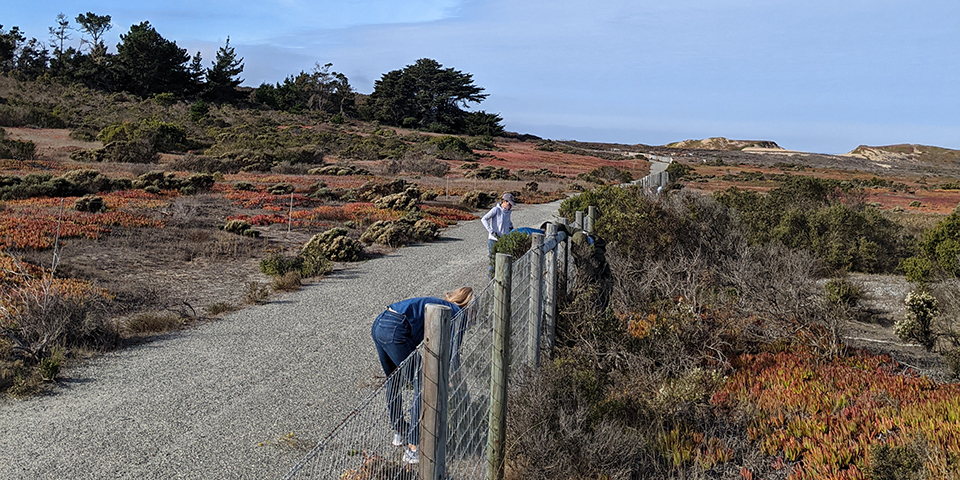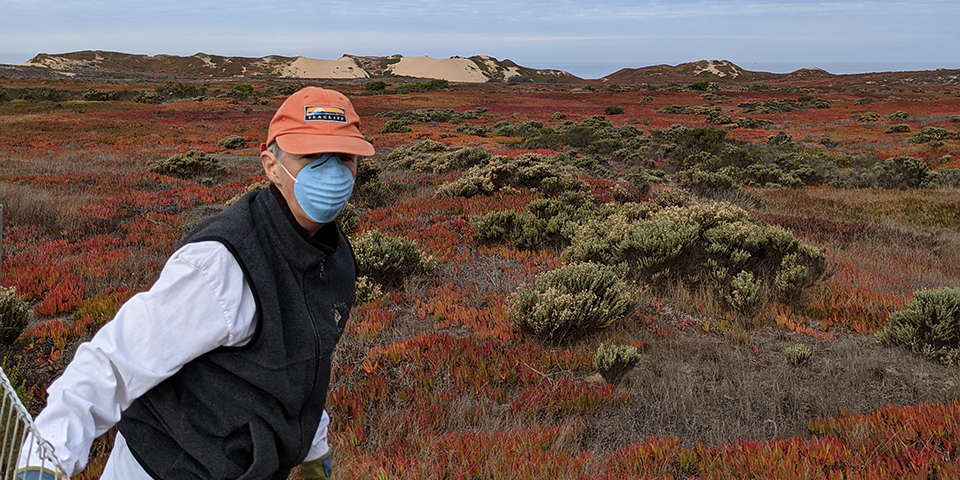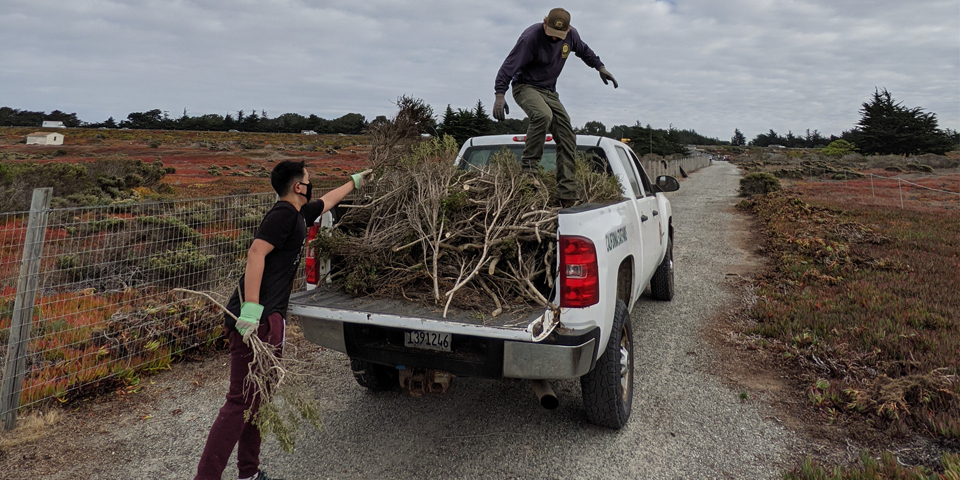Guest Post by California State Parks Foundation Core Leader, Matthew Todd
Fort Ord Dunes State Park edges up to Monterey Bay with walking and biking trails along picturesque rolling dunes and broad beaches. On a recent fall day, cloudy skies overhead and surf pounding nearby, our local volunteers gathered to help restore and preserve the native and endangered flora and fauna under the guidance of Kimiya, our local state park volunteer coordinator with the Natural Resources team. The volunteer crew was made up of seasoned locals and fresh faces (all safely masked), including several young Air Force personnel from the nearby Presidio. Our task: pull invasive ice plant and block social trails.
As with many state parks, our volunteers at Fort Ord Dunes State Park work to protect native species from two major antagonists: invasive species and people. Invasive plants compete with native species for vital resources, typically because they grow more aggressively than the native plants or lack natural predators that would keep them in check. People can harm native species by trampling on sensitive habitats, often creating illegal “social trails” in areas that are fenced off. People can also damage habitats by littering or removing native plants.
There are many invasive plant species along the Monterey coastline. Ice plant is particularly insidious, blanketing the coastal dunes and completely overwhelming the native plants with its aggressive year-round growth (as much as a meter per year) - volunteers often find shoots that have draped themselves over the top of native plants like coastal buckwheat and sage. It originated in South Africa in a climate very similar to the California coast and thrives even in the salty dunes. Unlike other invasive species which “escaped” from California gardens or made their way by accident, ice plant was planted specifically to prevent erosion of the dunes. In a bit of cruel irony, it isn’t especially effective at preventing erosion because of its shallow roots.
When we carefully pull the ice plant away from native buckwheat and sage, it rewards us with more than just a patch without this vicious invader, returning light, soil, and nutrients to the natives that belong there. The dead remnants of the ice plant also act as mulch for existing natives and the new seedlings we plant, enriching the soil and protecting young roots while the seedlings establish themselves. The larger pieces of ice plant can also be used as a physical barrier, blocking entrances to illegal social trails and hiding the trails themselves.
Our crew worked steadily for three hours, pulling and trimming ice plant and carefully covering a long, meandering social trail that cut across sensitive habitat. As we hiked back to our cars, we had a chance to look back at our work. The social trail, once clearly visible and covering several hundred meters, was all but gone, cleverly camouflaged by our volunteers with plant trimmings. It was a solid victory, even if acres of ice plant remained.


